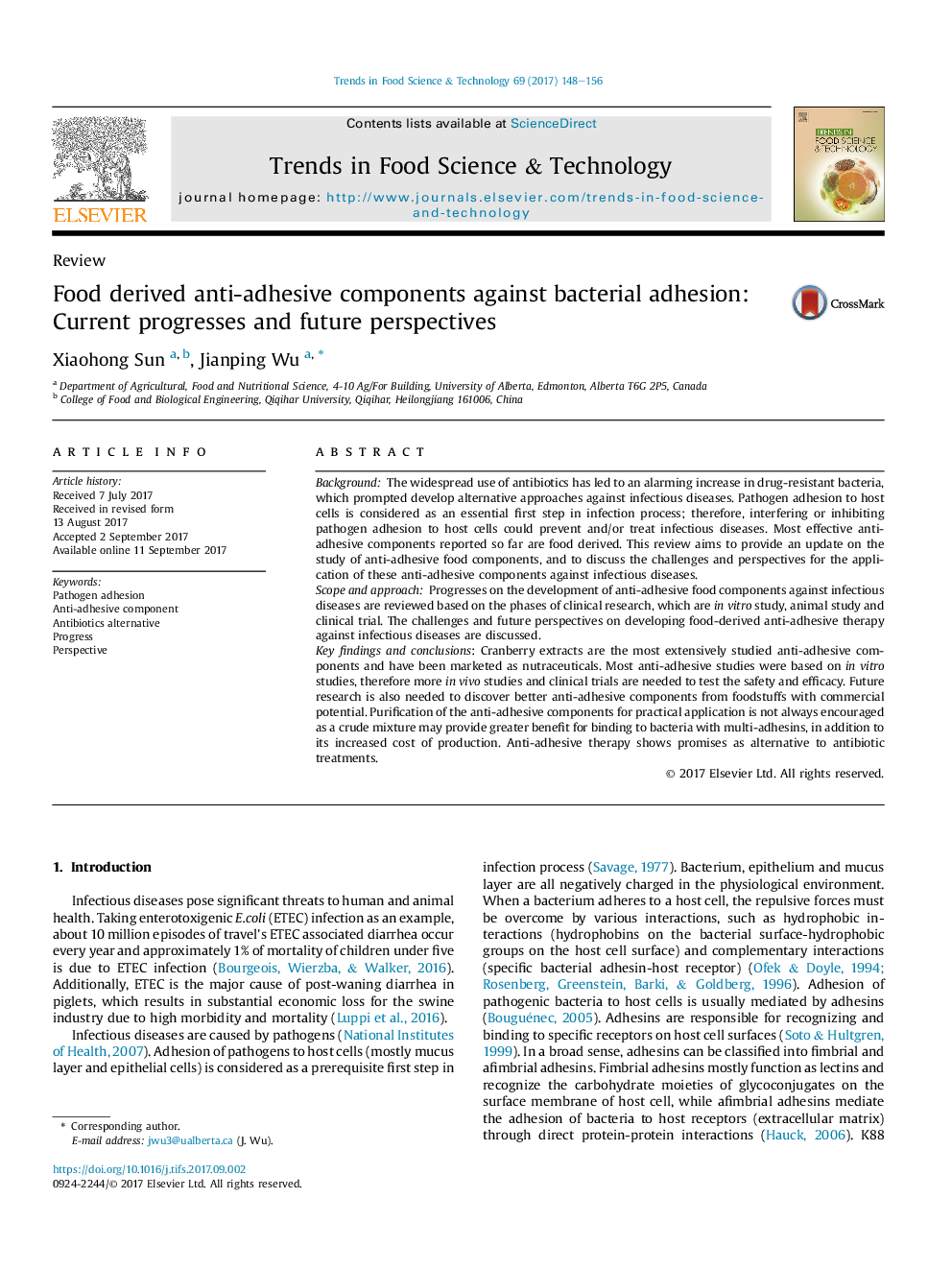| Article ID | Journal | Published Year | Pages | File Type |
|---|---|---|---|---|
| 5523693 | Trends in Food Science & Technology | 2017 | 9 Pages |
â¢Pathogen adhesion to host cells is an essential first step in infection process.â¢Inhibiting pathogen adhesion to host cells could prevent and/or treat infection.â¢Cranberry extracts are the most extensively studied anti-adhesive components.â¢Most anti-adhesive studies were based on in vitro studies.â¢Anti-adhesive therapy shows promises as alternative to antibiotic treatments.
BackgroundThe widespread use of antibiotics has led to an alarming increase in drug-resistant bacteria, which prompted develop alternative approaches against infectious diseases. Pathogen adhesion to host cells is considered as an essential first step in infection process; therefore, interfering or inhibiting pathogen adhesion to host cells could prevent and/or treat infectious diseases. Most effective anti-adhesive components reported so far are food derived. This review aims to provide an update on the study of anti-adhesive food components, and to discuss the challenges and perspectives for the application of these anti-adhesive components against infectious diseases.Scope and approachProgresses on the development of anti-adhesive food components against infectious diseases are reviewed based on the phases of clinical research, which are in vitro study, animal study and clinical trial. The challenges and future perspectives on developing food-derived anti-adhesive therapy against infectious diseases are discussed.Key findings and conclusions: Cranberry extracts are the most extensively studied anti-adhesive components and have been marketed as nutraceuticals. Most anti-adhesive studies were based on in vitro studies, therefore more in vivo studies and clinical trials are needed to test the safety and efficacy. Future research is also needed to discover better anti-adhesive components from foodstuffs with commercial potential. Purification of the anti-adhesive components for practical application is not always encouraged as a crude mixture may provide greater benefit for binding to bacteria with multi-adhesins, in addition to its increased cost of production. Anti-adhesive therapy shows promises as alternative to antibiotic treatments.
